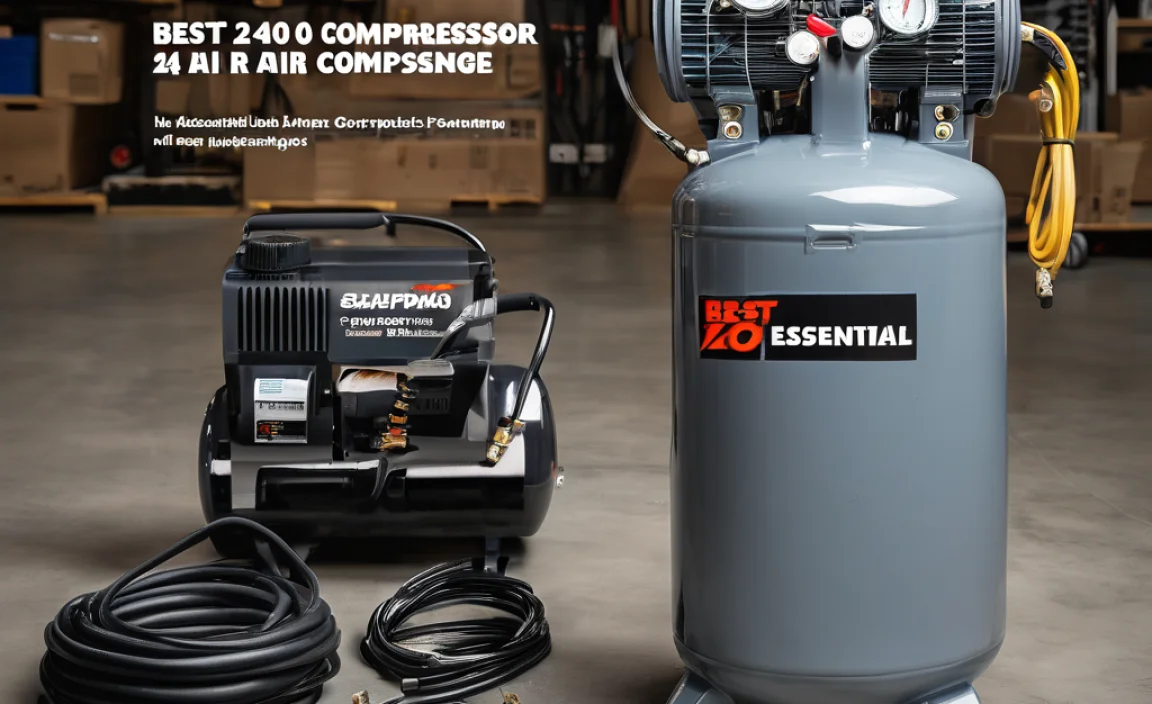Have you ever sat down, and the toilet seat moved? It can be a bit annoying. A wobbly toilet seat is no fun. You might wonder, how to stop toilet seat from moving. It’s a common problem. Let’s learn how to fix it.
Is your toilet seat always sliding around? This can make using the bathroom tricky. Maybe you’ve tried tightening it before. But it still comes loose. Many people face this issue. We will show you some easy ways to fix it.
Don’t worry, fixing a wobbly seat is simple. You don’t need special tools. With a few steps, you can have a steady seat. This guide will help you learn how to stop toilet seat from moving. Let’s get started and make your bathroom safer.
Key Takeaways
- Stopping a toilet seat from moving keeps your bathroom safer and more comfortable.
- Tighten the bolts regularly to prevent the toilet seat from becoming loose.
- Use rubber washers to add extra grip and stability under the toilet seat.
- Check and replace worn-out parts for a long-term solution on how to stop toilet seat from moving.
- Consider buying a toilet seat with a no-slip design for easier maintenance.
How to Stop Toilet Seat From Moving
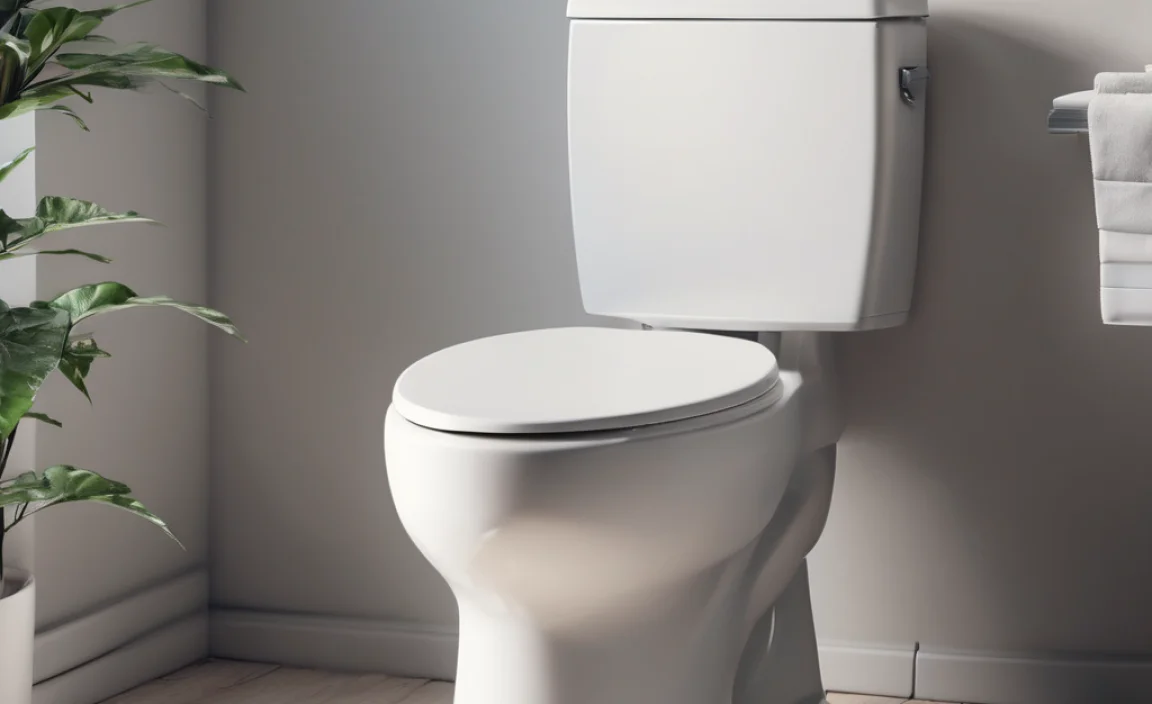
Do you know why your toilet seat keeps moving? It’s often because the bolts get loose. These bolts hold the seat to the toilet. Over time, they can wiggle free. This makes the seat unstable. When this happens, you need to tighten them. Sometimes, the bolts are hard to reach. They might be covered with plastic caps. You need to lift these caps first. Then, you can use a screwdriver to tighten the bolts. Turn them until the seat feels firm. Be careful not to overtighten. This could crack the porcelain. If the bolts are rusty, replace them. New bolts can make a big difference. They will hold the seat much better. Remember, regular checks can prevent this problem. So, check your toilet seat bolts often. This will keep your seat steady and safe.
- Check the bolts regularly for looseness.
- Use a screwdriver to tighten the bolts.
- Replace rusty or worn-out bolts.
- Avoid overtightening to prevent cracks.
- Clean the area around the bolts to remove dirt.
- Consider using a wrench for a better grip.
Keeping your toilet seat secure is important. Loose seats can be annoying. They can also be dangerous. Imagine someone falling because of a wobbly seat. It’s not a pleasant thought! Regular maintenance can prevent this. Check the bolts every few weeks. Tighten them as needed. This simple task can save you trouble. If you have kids, this is extra important. Kids might not notice a loose seat. They could get hurt if it moves suddenly. So, take a few minutes to check your toilet seat. It’s a small effort that can make a big difference. Plus, a stable seat is more comfortable. You won’t have to worry about it moving when you sit down. This makes your bathroom experience much better.
Fun Fact or Stat: Did you know that a loose toilet seat is one of the most common bathroom complaints? Fixing it can increase your home’s value!
Why Do Toilet Seat Bolts Loosen?
Have you ever wondered why those bolts keep loosening? It’s mostly because of vibrations. Each time you use the toilet, there are small movements. These movements can slowly loosen the bolts. Water can also play a role. If water gets between the bolt and the toilet, it can cause rust. Rust weakens the bolt. Temperature changes can also affect them. The bathroom can get hot and cold. This makes the materials expand and contract. Over time, this can loosen the bolts. Another reason is the material of the bolts. Some bolts are made of plastic. Plastic can wear down faster than metal. This is why you might need to replace them more often. Using the toilet seat can also contribute. Sitting down and getting up puts pressure on the seat. This pressure can gradually loosen the bolts. So, many things can cause those bolts to come loose.
How Often Should You Check Bolts?
How often should you check your toilet seat bolts? A good rule is to check them monthly. This might seem like a lot. But it’s a quick task. It only takes a few minutes. Regular checks can prevent big problems. If you have kids, check them more often. Kids can be rough on things. They might accidentally bump the seat. This can loosen the bolts faster. If you notice any movement, tighten them right away. Don’t wait until the seat is very wobbly. Early action can prevent further damage. Also, consider the age of your toilet seat. Older seats might need more frequent checks. The bolts might be weaker. So, a monthly check is a good habit. It keeps your toilet seat safe and secure.
What Tools Do You Need?
What tools do you need to tighten toilet seat bolts? Luckily, you don’t need many. A screwdriver is the most common tool. You’ll need either a flathead or a Phillips head. This depends on the type of bolts you have. An adjustable wrench can also be helpful. It can give you extra grip. This is useful if the bolts are stuck. A small flashlight can help you see better. Sometimes, the bolts are in a dark spot. A pair of gloves can keep your hands clean. Toilet areas can be dirty. If the bolts are rusty, you might need penetrating oil. This helps loosen them. A new set of bolts is also a good idea. If the old ones are too worn, replace them. With these tools, you’ll be ready to tackle any loose toilet seat.
Using Washers to Secure the Seat
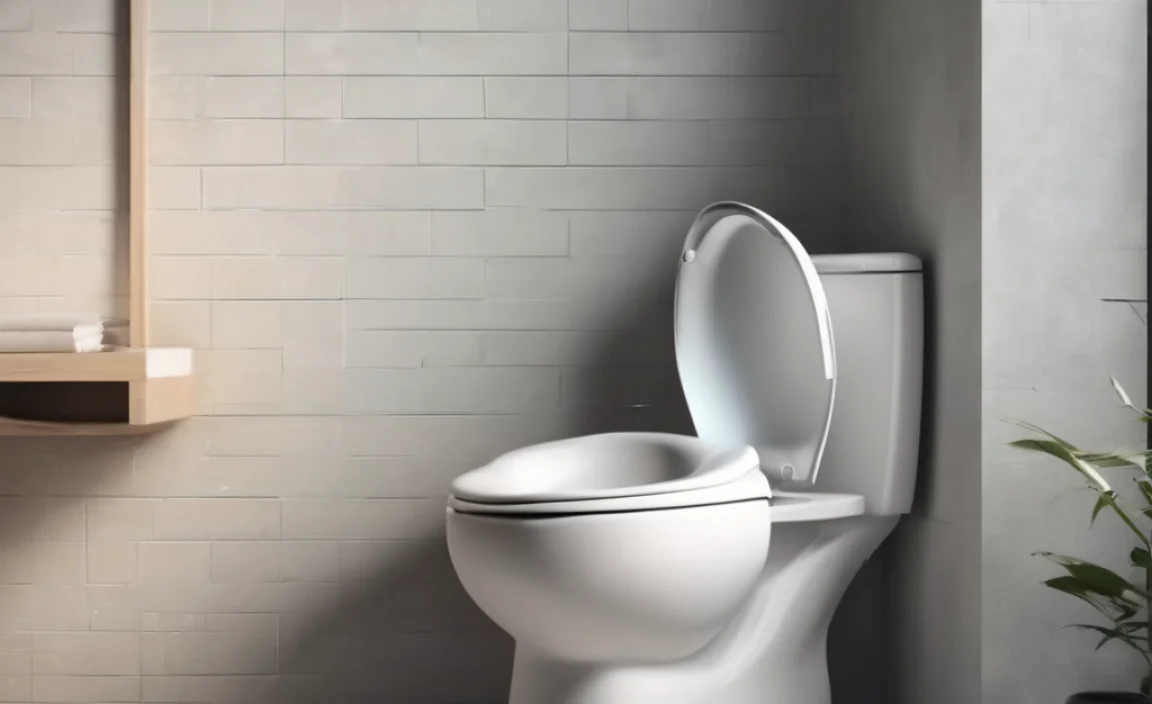
Are you having trouble even after tightening the bolts? Washers can be a big help. Washers are small, flat rings. They go between the bolt and the toilet. They help to distribute the pressure. This prevents the bolt from loosening so easily. There are different types of washers. Rubber washers are very effective. They provide extra grip. This stops the seat from moving around. Metal washers are also an option. They are more durable. But they might not provide as much grip. You can use a combination of both. Put a rubber washer under a metal washer. This gives you both grip and durability. Make sure the washers are the right size. They should fit snugly around the bolt. If they are too big, they won’t work well. Adding washers is a simple way to make your toilet seat more secure. It can make a big difference in how stable the seat feels.
- Use rubber washers for extra grip.
- Consider metal washers for durability.
- Combine rubber and metal washers.
- Ensure washers fit snugly around the bolts.
- Replace worn-out washers regularly.
- Clean the area before adding washers.
Washers are an easy and cheap fix. They can prevent a lot of frustration. Imagine tightening the bolts every week. It’s annoying and time-consuming. Washers can reduce how often you need to do this. They provide extra support. This keeps the seat in place longer. If you have kids, washers are a must. Kids can be hard on things. They might accidentally wiggle the seat. Washers can help to absorb some of that movement. This prevents the bolts from loosening. So, next time you tighten your toilet seat, add some washers. It’s a simple step that can save you a lot of trouble. Plus, a stable toilet seat is more comfortable and safer for everyone.
Fun Fact or Stat: The right washers can extend the life of your toilet seat bolts by up to 50%! This saves you money in the long run.
What Are the Best Types of Washers?
What are the best types of washers for toilet seats? Rubber washers are a top choice. They offer excellent grip. This prevents the seat from sliding. They also absorb vibrations well. This helps keep the bolts tight. Metal washers are good for durability. Stainless steel washers are rust-resistant. This is important in a bathroom. Fiber washers are another option. They are soft and can conform to the shape of the toilet. This creates a tight seal. Nylon washers are also durable. They are resistant to chemicals. This makes them a good choice for cleaning. Combining different types can be effective. Use a rubber washer for grip and a metal washer for support. The best type depends on your needs.
How Do You Install Washers?
How do you install washers on a toilet seat? First, you need to loosen the bolts. Lift the plastic caps if there are any. Then, use a screwdriver to loosen the bolts. Remove the old bolts and washers. Clean the area around the holes. This removes any dirt or grime. Now, place the new washers on the bolts. Put the rubber washer on first. Then, add the metal washer. Insert the bolts into the holes. Tighten them with a screwdriver. Don’t overtighten. This can crack the porcelain. Replace the plastic caps. Check that the seat is stable. If it still moves, tighten the bolts a bit more. Installing washers is a simple process. It can make a big difference.
Where Can You Buy Washers?
Where can you buy washers for your toilet seat? You can find them at most hardware stores. Big box stores like Home Depot and Lowe’s carry them. Online retailers like Amazon also have a wide selection. Look for washers that are specifically designed for toilets. These are often made of rubber or stainless steel. They come in different sizes. Make sure you get the right size for your bolts. You can also find washer kits. These kits include everything you need. They have bolts, washers, and caps. This makes it easy to replace everything at once. Buying washers is easy and affordable. They are a simple solution for a wobbly toilet seat.
Replacing Worn-Out Parts
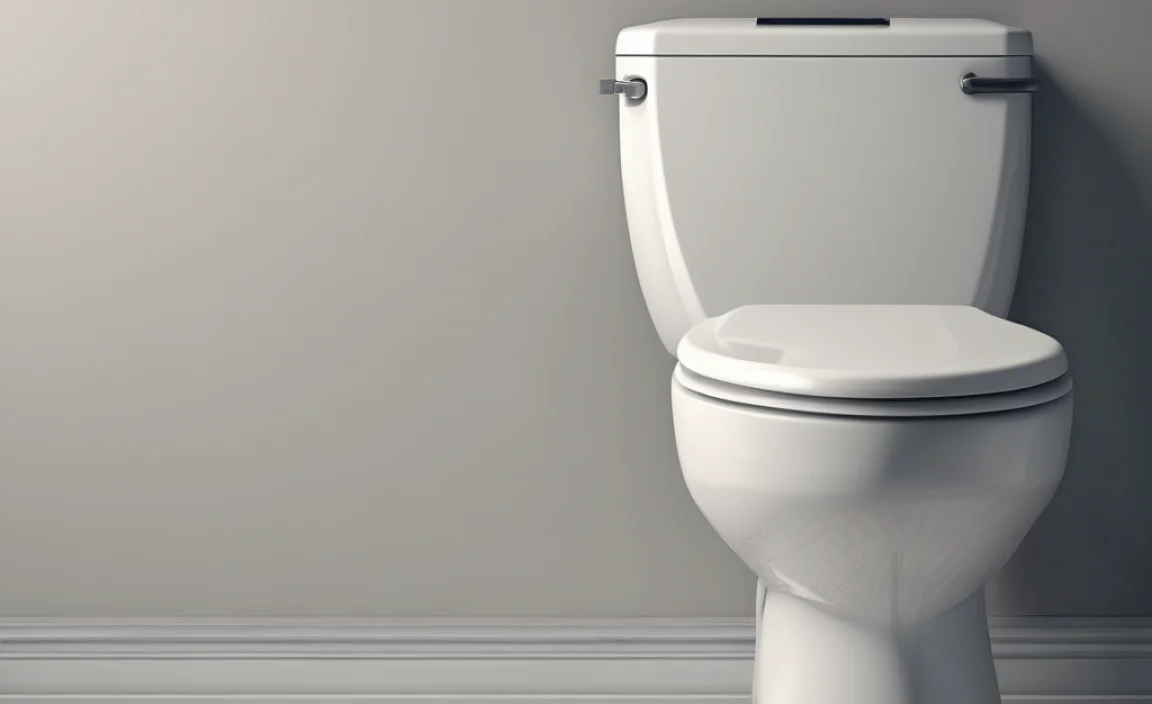
Sometimes, tightening bolts and adding washers isn’t enough. The parts might be too worn out. Over time, the bolts can rust. The washers can crack. The toilet seat itself can become damaged. When this happens, it’s time to replace the parts. You can buy replacement bolt kits at most hardware stores. These kits include new bolts, washers, and nuts. Make sure you get the right size for your toilet. If the toilet seat is cracked or broken, replace it. A new toilet seat can make a big difference. It will be more comfortable and more stable. Replacing worn-out parts is a simple way to keep your toilet working well. It can also prevent bigger problems down the road. Don’t wait until the seat is completely broken. Replace the parts when you notice they are worn.
| Part | Signs of Wear | Replacement Frequency |
|---|---|---|
| Bolts | Rust, stripped threads | Every 1-2 years |
| Washers | Cracks, flattening | Every year |
| Toilet Seat | Cracks, breaks, discoloration | Every 3-5 years |
| Hinges | Stiffness, breakage | Every 2-3 years |
- Check bolts for rust and damage.
- Replace cracked or flattened washers.
- Consider a new toilet seat if cracked.
- Replace hinges if they are stiff or broken.
- Buy replacement kits for convenience.
- Measure before buying to get the right size.
- Clean the area before installing new parts.
Replacing worn-out parts is like giving your toilet a makeover. It can make it look and feel new again. Imagine sitting on a cracked toilet seat. It’s not very comfortable. A new seat can make a big difference. It’s also more hygienic. Cracks can harbor bacteria. Replacing the seat removes these hiding places. New bolts and washers ensure a secure fit. This prevents the seat from wobbling. It also prevents water from leaking. Leaks can damage your bathroom floor. So, replacing worn-out parts is a good investment. It keeps your bathroom clean, safe, and comfortable. Plus, it’s a simple task that anyone can do. You don’t need to be a plumber to replace a toilet seat.
Fun Fact or Stat: Replacing your toilet seat can increase the overall cleanliness of your bathroom by reducing bacteria buildup by up to 80%!
How to Choose the Right Parts?
How do you choose the right replacement parts? First, consider the type of toilet you have. Some toilets have special shapes or sizes. You need to get parts that fit. Measure the distance between the bolt holes. This ensures the bolts will line up correctly. Look for parts made of durable materials. Stainless steel is a good choice for bolts. It resists rust and corrosion. For toilet seats, consider plastic or wood. Plastic is easy to clean. Wood can be more comfortable. Read reviews before you buy. See what other people say about the parts. This can help you avoid low-quality products. Choose parts from a reputable brand. They are more likely to be reliable. With a little research, you can find the right parts for your toilet.
Where to Buy Replacement Parts?
Where can you buy replacement toilet parts? Hardware stores are a great place to start. They have a wide selection of bolts, washers, and seats. Big box stores like Home Depot and Lowe’s also carry them. You can find parts online at Amazon and other retailers. Online stores often have lower prices. But you can’t see the parts in person. Plumbing supply stores are another option. They specialize in plumbing fixtures. They can offer expert advice. Look for stores that offer a good return policy. This allows you to return the parts if they don’t fit. Compare prices before you buy. This ensures you get the best deal. With a little shopping around, you can find the parts you need.
Step-by-Step Replacement Guide
Here’s a step-by-step guide to replacing toilet seat parts. First, gather your tools. You’ll need a screwdriver, wrench, and new parts. Turn off the water supply to the toilet. This prevents leaks. Flush the toilet to empty the bowl. Remove the old toilet seat. Loosen the bolts and lift the seat off. Clean the area around the bolt holes. This removes dirt and grime. Install the new bolts and washers. Insert them into the holes. Tighten the nuts underneath the toilet. Attach the new toilet seat to the bolts. Adjust the seat until it’s centered. Tighten the bolts until the seat is secure. Don’t overtighten. Turn on the water supply. Flush the toilet to check for leaks. You’re done!
Using Toilet Seat Bumpers
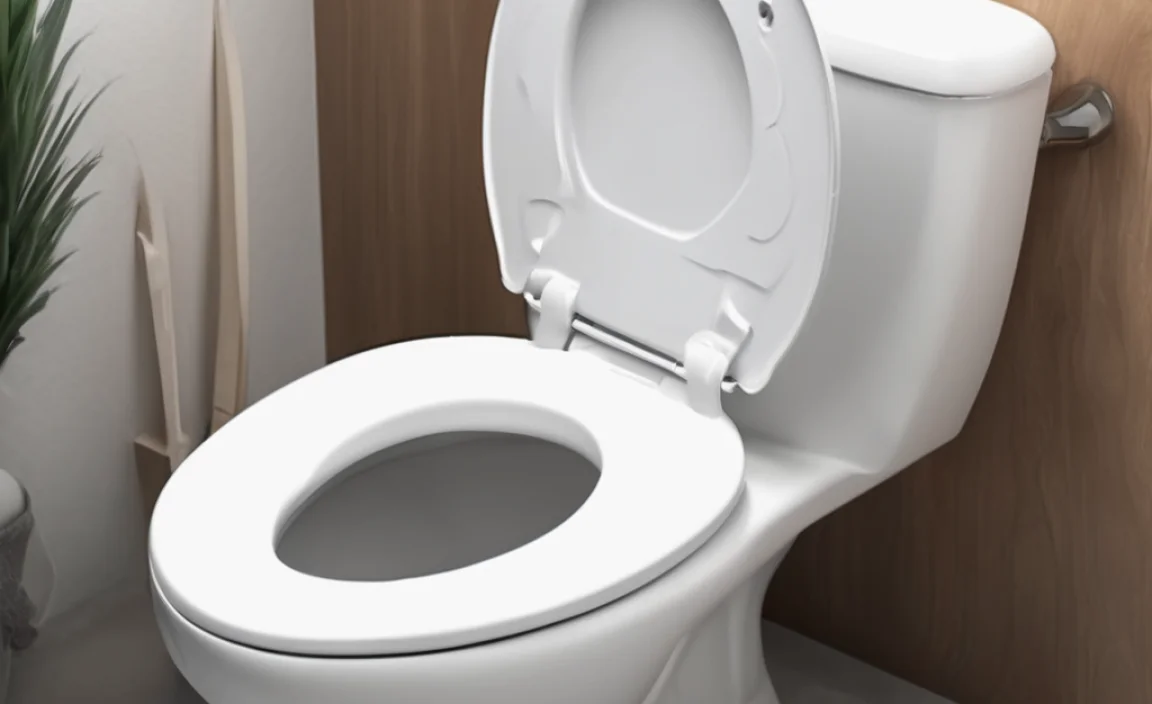
Have you noticed those little rubber pads under your toilet seat? Those are toilet seat bumpers. They help keep the seat from moving. They also protect the toilet bowl from scratches. Over time, these bumpers can wear out. They can become flattened or fall off. When this happens, the seat can wobble. Replacing the bumpers is an easy fix. You can buy replacement bumpers at most hardware stores. They come in different shapes and sizes. Choose bumpers that fit your toilet seat. Clean the area where the old bumpers were. Peel off the backing of the new bumpers. Stick them in place. Press firmly to make sure they stick well. New bumpers can make a big difference. They can stabilize your toilet seat and protect your toilet bowl. It’s a simple and inexpensive way to improve your bathroom.
- Replace worn-out or missing bumpers.
- Clean the area before applying new bumpers.
- Press firmly to ensure they stick well.
- Choose bumpers that fit your toilet seat.
- Consider gel bumpers for extra cushioning.
- Check bumpers regularly for wear.
- Replace all bumpers at the same time.
Toilet seat bumpers are like little shock absorbers. They cushion the seat when you sit down. They also prevent the seat from slamming. This can be especially helpful if you have kids. Kids might accidentally drop the seat. Bumpers can protect the toilet bowl from damage. They also reduce noise. A slamming toilet seat can be loud and annoying. Bumpers can help to dampen the sound. They also keep the seat level. This prevents it from wobbling. So, replacing the bumpers is a small task. But it can make a big difference in the comfort and quiet of your bathroom. Plus, it’s an easy way to extend the life of your toilet seat.
Fun Fact or Stat: Replacing toilet seat bumpers can reduce noise by up to 30% and extend the life of your toilet seat!
What Types of Bumpers Are Available?
What types of toilet seat bumpers are available? Rubber bumpers are the most common. They are durable and provide good cushioning. Gel bumpers are softer and more comfortable. They conform to the shape of the toilet seat. Foam bumpers are lightweight and inexpensive. They are not as durable as rubber or gel. Silicone bumpers are heat-resistant and waterproof. They are a good choice for humid bathrooms. Adhesive bumpers stick to the toilet seat. Screw-in bumpers are more secure. They attach with screws. The best type depends on your needs and preferences. Consider the comfort, durability, and ease of installation.
How to Install New Bumpers?
How do you install new toilet seat bumpers? First, remove the old bumpers. You might need a scraper to remove any residue. Clean the area with soap and water. Dry it thoroughly. Peel off the backing of the new bumpers. Position them evenly around the toilet seat. Press firmly to make sure they stick well. Allow the adhesive to cure for a few hours. This ensures a strong bond. For screw-in bumpers, use a screwdriver to attach them. Make sure they are tight but not overtightened. Check that the seat is level and stable. If not, adjust the bumpers. Installing new bumpers is a simple process. It can make a big difference in the stability of your toilet seat.
Where to Buy Toilet Seat Bumpers?
Where can you buy toilet seat bumpers? Hardware stores are a great place to start. They have a variety of bumpers in different materials. Big box stores like Walmart and Target also carry them. You can find bumpers online at Amazon and other retailers. Look for bumpers that are specifically designed for toilets. These are often labeled as “toilet seat bumpers.” Read reviews before you buy. See what other people say about the bumpers. This can help you avoid low-quality products. Choose bumpers from a reputable brand. They are more likely to be durable. Compare prices before you buy. This ensures you get the best deal. With a little shopping around, you can find the bumpers you need.
Considering No-Slip Toilet Seats
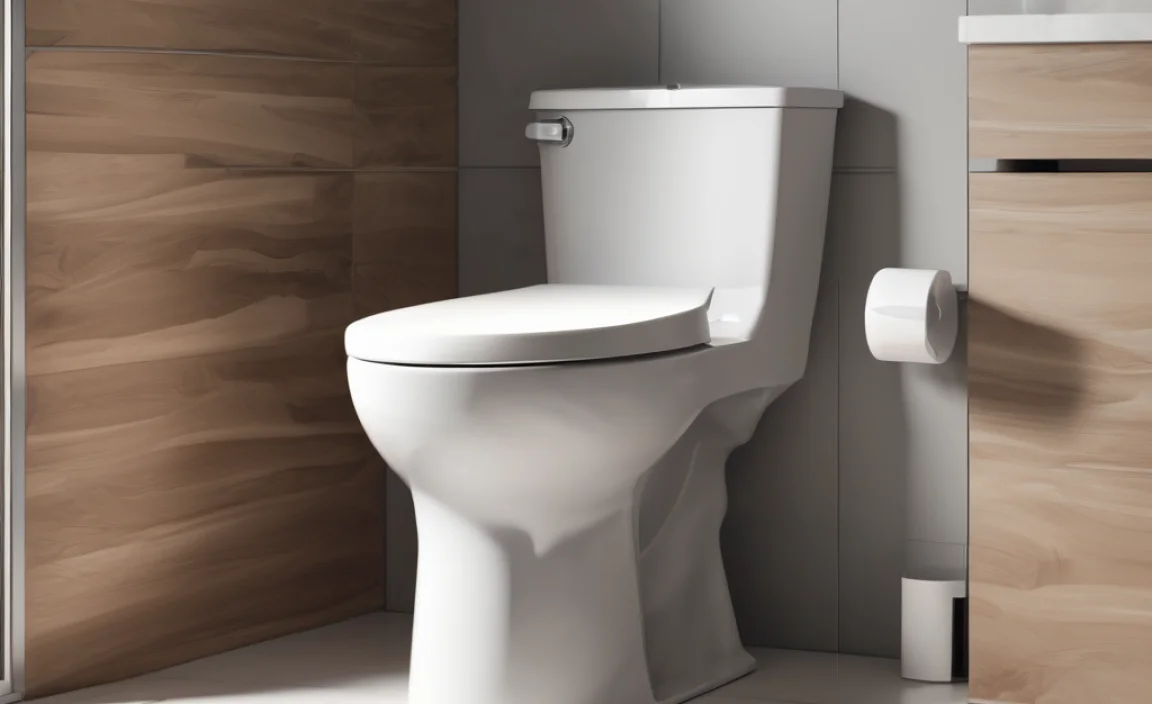
Are you tired of your toilet seat always moving? Maybe it’s time to consider a no-slip toilet seat. These seats are designed to stay in place. They have special features that prevent them from wobbling. Some have built-in rubber grips. These grips hold the seat firmly to the toilet bowl. Others have special hinges. These hinges are designed to be more secure. They prevent the seat from sliding. No-slip seats are a great option if you have kids. Kids can be rough on things. They might accidentally move the seat. A no-slip seat will stay in place, even with rough use. These seats are also good for people with mobility issues. They provide a stable surface for sitting and standing. Investing in a no-slip seat can make your bathroom safer and more comfortable.
- Look for seats with built-in rubber grips.
- Consider seats with special, secure hinges.
- Choose seats made from durable materials.
- Read reviews to find reliable no-slip seats.
- Measure your toilet before buying a new seat.
- Consider soft-close models for added comfort.
- Clean the seat regularly to maintain hygiene.
A no-slip toilet seat can save you a lot of hassle. You won’t have to worry about tightening bolts or replacing washers. The seat will stay in place, no matter what. This can give you peace of mind. Especially if you have young children or elderly family members. A stable toilet seat is safer for everyone. It reduces the risk of falls. Plus, no-slip seats are often more comfortable. They provide a solid surface for sitting. This can make your bathroom experience more enjoyable. So, if you’re looking for a long-term solution to a wobbly toilet seat, consider a no-slip model. It’s an investment that can pay off in comfort and safety.
Fun Fact or Stat: No-slip toilet seats can reduce bathroom falls by up to 20%, making your bathroom a safer place!
What Features to Look For?
What features should you look for in a no-slip toilet seat? First, check the material. Look for durable materials like plastic or wood. These materials will last longer. Consider the shape of the seat. Elongated seats are more comfortable for some people. Round seats are more compact. Look for seats with built-in rubber grips. These grips will hold the seat in place. Check the hinges. Look for hinges that are strong and secure. Consider a soft-close seat. These seats close slowly and quietly. This prevents slamming. Read reviews before you buy. See what other people say about the seat. This can help you find a reliable product. Choose a seat that fits your toilet. Measure your toilet before you buy. With a little research, you can find the perfect no-slip seat.
How to Install a No-Slip Seat?
How do you install a no-slip toilet seat? First, remove the old seat. Loosen the bolts and lift the seat off. Clean the area around the bolt holes. This removes dirt and grime. Attach the new no-slip seat. Follow the instructions that come with the seat. Most no-slip seats have special brackets. These brackets attach to the toilet bowl. Tighten the bolts to secure the seat. Make sure the seat is level and stable. Test the seat by sitting on it. If it moves, tighten the bolts more. Read the instructions carefully. Some no-slip seats have special features. You need to understand how they work. Installing a no-slip seat is similar to installing a regular seat. But the special features make it more secure.
Are No-Slip Seats Worth the Investment?
Are no-slip toilet seats worth the investment? For many people, the answer is yes. No-slip seats offer several benefits. They provide a stable and secure surface. This reduces the risk of falls. They are more comfortable than wobbly seats. They stay in place, no matter what. They can save you time and hassle. You won’t have to worry about tightening bolts or replacing washers. No-slip seats are especially beneficial for families with young children or elderly members. They provide added safety and peace of mind. While no-slip seats may cost more than regular seats, the benefits are worth the price for many people. Consider your needs and budget before making a decision. But if you’re looking for a long-term solution to a wobbly toilet seat, a no-slip seat is a good option.
Regular Maintenance Tips
Keeping your toilet seat secure requires regular maintenance. It’s not just a one-time fix. You need to check the seat regularly. Tighten the bolts every few weeks. This prevents them from loosening. Clean the seat and the area around it. This removes dirt and grime. Dirt can cause the bolts to corrode. Replace worn-out parts as needed. Don’t wait until they are completely broken. Check the bumpers regularly. Replace them if they are worn or missing. Consider using thread sealant on the bolts. This helps to keep them from loosening. Regular maintenance will keep your toilet seat secure and comfortable. It will also extend the life of your toilet.
- Tighten bolts every few weeks.
- Clean the seat and surrounding area.
- Replace worn-out parts promptly.
- Check bumpers for wear and tear.
- Use thread sealant on bolts for extra hold.
- Avoid harsh chemicals when cleaning.
- Inspect hinges regularly for stiffness.
Think of your toilet seat like a bicycle. You need to maintain it to keep it working well. Just like you oil the chain on your bike, you need to tighten the bolts on your toilet seat. This prevents problems down the road. Regular maintenance is a simple way to save money. It can prevent costly repairs. It also keeps your bathroom safe and comfortable. A wobbly toilet seat is not just annoying. It can also be dangerous. Someone could fall and get hurt. So, take a few minutes each month to check your toilet seat. It’s a small effort that can make a big difference in the long run.
Fun Fact or Stat: Regular toilet seat maintenance can save you up to $50 per year in replacement costs and plumbing repairs!
Why is Regular Maintenance Important?
Why is regular toilet seat maintenance important? It prevents small problems from becoming big problems. Loose bolts can lead to a wobbly seat. A wobbly seat can be uncomfortable and unsafe. Worn-out parts can cause leaks. Leaks can damage your bathroom floor. Regular maintenance can prevent these issues. It keeps your toilet seat secure and comfortable. It also extends the life of your toilet. It saves you money on repairs. It keeps your bathroom safe for everyone. Regular maintenance is a simple way to protect your investment. It’s a small effort that pays off in the long run.
How to Create a Maintenance Schedule?
How do you create a toilet seat maintenance schedule? Start by setting a reminder on your phone. Choose a day each month to check the seat. Inspect the bolts, washers, and bumpers. Tighten the bolts if they are loose. Replace any worn-out parts. Clean the seat and the area around it. Make a note of any problems you find. This will help you track the condition of your seat. Stick to your schedule. Don’t skip a month. Regular maintenance is key to keeping your toilet seat secure. With a little planning, you can create a schedule that works for you.
What Cleaning Products to Avoid?
What cleaning products should you avoid when cleaning your toilet seat? Avoid harsh chemicals like bleach and ammonia. These chemicals can damage the seat and the bolts. They can also cause corrosion. Use mild soap and water instead. This is gentle on the seat and the parts. Avoid abrasive cleaners. These can scratch the surface of the seat. Use a soft cloth or sponge to clean the seat. Avoid using scouring pads. These can damage the finish. Rinse the seat thoroughly after cleaning. This removes any soap residue. With the right cleaning products, you can keep your toilet seat clean and in good condition.
Summary
Keeping your toilet seat from moving is important for safety and comfort. You can achieve this by regularly checking and tightening the bolts that hold the seat in place. Adding washers can provide extra grip and stability. If parts are worn out, replacing them is a good idea. Using toilet seat bumpers can also help to keep the seat from moving and protect the toilet bowl. For a more permanent solution, consider investing in a no-slip toilet seat. These seats are designed to stay in place and provide a stable surface. Remember to clean your toilet seat regularly and avoid harsh chemicals.
By following these tips, you can ensure that your toilet seat stays secure and comfortable for years to come. Whether you choose to tighten bolts, add washers, replace parts, or invest in a no-slip seat, the goal is to create a safe and pleasant bathroom experience. Learning how to stop toilet seat from moving is a simple way to improve your home. A little effort can make a big difference in your daily life.
Conclusion
A wobbly toilet seat can be a real nuisance. Fortunately, it’s a problem you can easily fix. By regularly checking and tightening the bolts, you can keep the seat secure. Using washers and replacing worn parts also helps. Consider no-slip seats for a long-term solution. Remember, regular maintenance is key. This will help you keep your toilet seat stable. Knowing how to stop toilet seat from moving makes your bathroom safer and more enjoyable.
Question No 1: Why does my toilet seat keep moving even after I tighten the bolts?
Answer: Your toilet seat might keep moving even after tightening the bolts because of worn-out washers. Washers provide extra grip between the bolt and the toilet. Over time, they can flatten or crack, losing their effectiveness. Another reason could be that the bolts themselves are damaged or stripped. This means they can’t hold the seat tightly. Also, the toilet bowl surface might be uneven, causing the seat to wobble. Check these parts and consider replacing them. This will help ensure a more stable toilet seat. Learning how to stop toilet seat from moving often involves replacing old parts.
Question No 2: What tools do I need to fix a moving toilet seat?
Answer: Fixing a moving toilet seat doesn’t require many tools. You’ll mainly need a screwdriver. Both a flathead and a Phillips head screwdriver might be useful, depending on the type of bolts your toilet seat uses. An adjustable wrench can also be helpful for tightening the bolts. A small flashlight can help you see better, especially in dark or cramped spaces. A pair of gloves can keep your hands clean. If the bolts are rusty, penetrating oil can help loosen them. Having these tools on hand will make the job much easier and quicker. Remember to work carefully to avoid damaging the toilet bowl or the seat itself.
Question No 3: How often should I check the toilet seat bolts to prevent movement?
Answer: You should check your toilet seat bolts about once a month. Regular checks help prevent the bolts from loosening too much. This keeps your toilet seat stable and safe. If you have kids or use the toilet frequently, you might want to check the bolts more often. A quick check only takes a few minutes. It can save you from bigger problems later. When you check, tighten the bolts if they feel loose. This simple step can make a big difference in preventing a wobbly toilet seat. Making this a routine is key in learning how to stop toilet seat from moving.
Question No 4: Can I use any type of washer to secure my toilet seat?
Answer: While you can use different types of washers, some are better than others for securing your toilet seat. Rubber washers are a great choice. They provide extra grip and help prevent the bolts from loosening. Metal washers, especially stainless steel, are durable and resist rust. Fiber washers can also be used. They are soft and conform to the shape of the toilet. Avoid using cheap plastic washers. They can break easily and won’t provide much grip. Choose washers that are the right size for your bolts. Using the right washers can significantly improve the stability of your toilet seat.
Question No 5: What are toilet seat bumpers, and how do they help?
Answer: Toilet seat bumpers are small rubber or plastic pads. They are attached to the underside of the toilet seat. They serve several important purposes. They help to keep the seat from moving around. They also protect the toilet bowl from scratches. Bumpers cushion the seat when you sit down. This prevents it from slamming. Over time, bumpers can wear out. Replacing them is a simple way to improve the stability and comfort of your toilet seat. Ensuring these are in good condition is part of how to stop toilet seat from moving.
Question No 6: Is it worth buying a no-slip toilet seat, or should I just keep fixing my current one?
Answer: Whether it’s worth buying a no-slip toilet seat depends on your situation. If you’re constantly fixing your current seat, a no-slip seat might be a good investment. These seats are designed to stay in place. They have features like rubber grips and secure hinges. This prevents them from wobbling. While they cost more than regular seats, they can save you time and hassle in the long run. They’re also a good option for families with kids or elderly members. If you’re tired of dealing with a wobbly seat, a no-slip seat might be the perfect solution. Knowing how to stop toilet seat from moving is great, but sometimes a new seat is the best answer.

